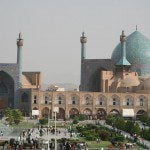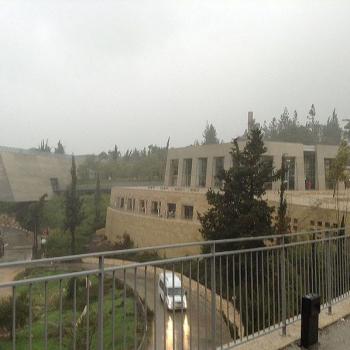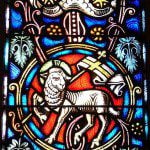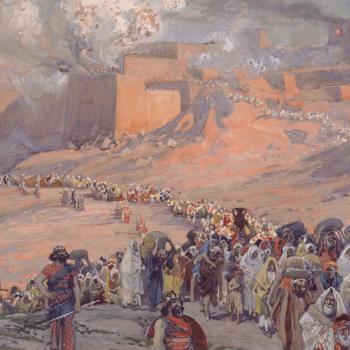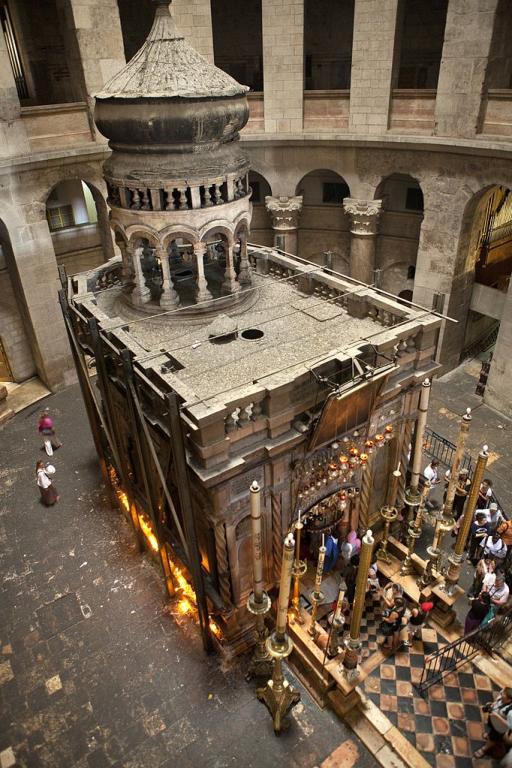
Wikimedia Commons public domain photograph
The Babylonian Talmud became, by a considerable distance, the more important of the two works, partly because Palestinian Jewry was steadily on the wane while the Jews of Babylon were relatively well organized and prosperous. “It became,” as Israeli historian Shmuel Safrai observes,
the basic—and in many places almost the exclusive—asset of Jewish tradition, the foundation of all Jewish thought and aspirations and the guide for the daily life of the Jew. . . . In almost every period and community until the modern age, the Talmud was the main object of Jewish study and education; all the external conditions and events of life seemed to be but passing incidents, and the only true, permanent reality was that of the Talmud.[1]
In 313 A.D., however, the Emperor Constantine officially recognized Christianity, and within a remarkably short time the new religion had become the official faith of the empire. The Jews now faced a twofold threat. Besides the paganism they had opposed for centuries, they now had to deal with their far more zealous and far more dangerous religious cousins, the self-proclaimed disciples of Jesus of Nazareth. Christianity was considerably less tolerant than paganism had been; unlike pagans, the monotheistic Christians couldn’t accept the legitimacy and truth of other, contradictory faiths. By at least the end of the fourth century, the continued existence of this obstinate people, the Jews, had become an irritation that pious Christians simply couldn’t overlook. Jews were seen, as the Emperor Constantius put it, as nothing but a “pernicious” or “despicable sect,” meeting not so much for worship as to carry out what he termed “sacrilegious assemblies.” “The Church,” writes Shmuel Safrai, “consistently fostered hatred and contempt for all that was Jewish.”[2] As bigoted preachers constantly reminded their Christian neighbors, the Jews were the “murderers of Christ.” In Palestine, entire Jewish villages—the majority of the province was still held by Jewish landowners until the beginning of the century—were burned to the ground by devout followers of Jesus. These Christians reasoned that—since they were the new Israel, having replaced the old Israel that had forfeited its blessings and its covenant through its rejection of the Messiah—the Holy Land was theirs. Besides, didn’t Palestine contain the site of the Crucifixion of Christ and his burial place, the Holy Sepulchre? (That Palestine also included sites holy in Jewish history was not of great importance to the new masters of the empire. Among other things, Christian government officials seem to have banned Jewish pilgrimages to Jerusalem.)
Such treatment merely accelerated a process of de-Judaization that had been going on in Palestine since the Great Revolt of 66-70 A.D. Gradually, despite the efforts of the rabbis to preserve Jewish landholdings in Palestine and indeed to encourage foreign Jews to return to the Holy Land, small farmers had found themselves unable to retain their lands. The process was painful and humiliating. And it was all the worse because it represented the seemingly final and decisive loss of Jewish land to foreign oppressors. (The Roman government eventually began to offer incentives to its retiring soldiers to settle in Palestine. These inducements led to a surge in the Christian population there, but, this time around, these were not Jewish but gentile Christians.) Taxes on Palestinian Jews grew and grew, often as punishment for their rebelliousness and their “obstinacy.” The pagan Romans had resented the difficulty that Judea had given them and were angered by their own heavy losses in putting down what they regarded as wholly unjustifed rebellions against their competent and fair-minded administration of the province. It’s scarcely surprising, therefore, that they decided to make the Jews pay. Sometimes this even involved literal payment. From the time of the Great Revolt in the first century, for instance, Jews were taxed more heavily than others in the empire in order to pay for the larger Roman garrisons and bureaucracies that were dispatched to Palestine to keep them under control. Their small holdings were gobbled up by ever larger and larger estates, and, now propertyless, the Jews turned to commerce and trade. (In the third century, Roman taxes were relatively light on city dwellers—in Palestine, since the Jews had been expelled from the cities, these were mostly Gentiles—but they were oppressively heavy on agriculturalists, who, in Palestine, were mostly Jews.) Then, detached from the land, unable to make ends meet, they emigrated. And as its population decreased, the influence of Palestinian Judaism over world Jewry declined correspondingly. Sometimes, even under the pagan Romans, there was open persecution of the Jews on religious grounds, although it was undoubtedly given impetus by anger over the two rebellions.
Rabbi Nathan says: “They who love and keep my commandments”—those are the Jews who live in the Land of Israel and give their lives for the sake of the commandments. Why were you killed? For having circumcised my son. Why were you burned? For having studied the Torah. Why were you crucified? For having eaten unleavened bread. Why were you flagellated? For having blessed the lulay.[3]
[1] Shmuel Safrai, in Ben-Sasson, A History of the Jewish People, 379.
[2] Shmuel Safrai, in Ben-Sasson, A History of the Jewish People, 349. Constantius’s language—which, incidentally, is not unlike the language of some modern anti-Mormons—is cited by Safrai on p. 350.
[3] Mehhilta on Jethro, cited by Shmuel Safrai, in Ben-Sasson, A History of the Jewish People, 334.
Posted from Park City, Utah



